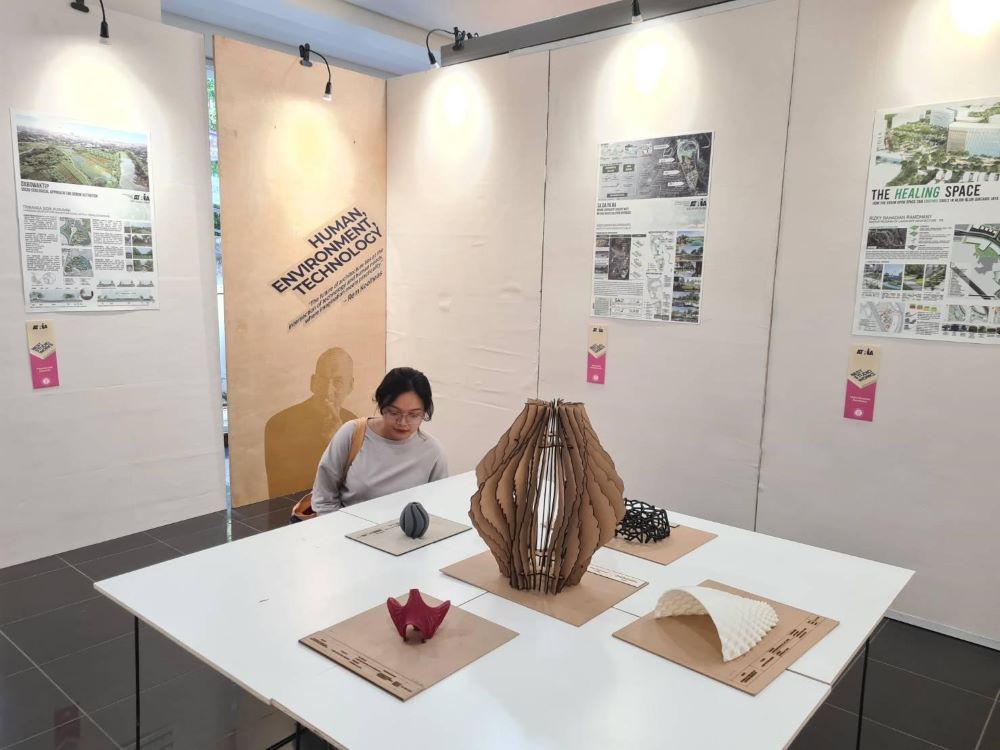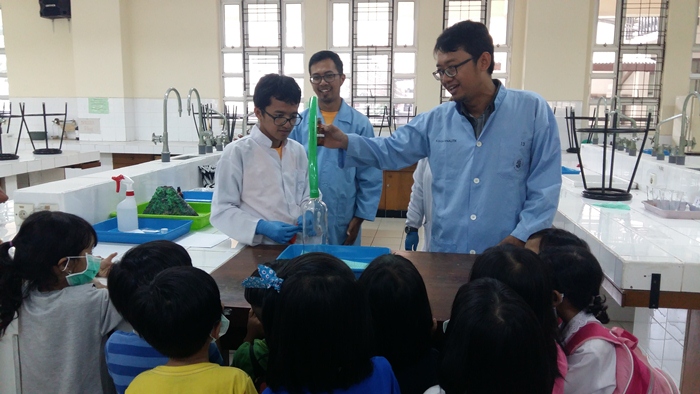Final Project Exhibition of ITB's Craft Study Program
By Ria Ayu Pramudita
Editor Ria Ayu Pramudita
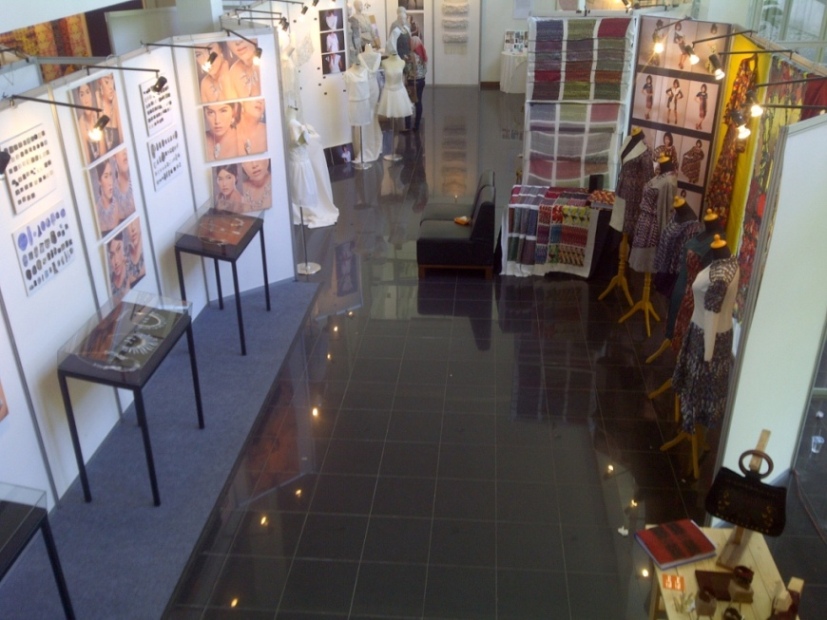
 BANDUNG, itb.ac.id -- ITB's Crafts study program held an exhibition to present students' Final Project on Friday (15/06/12). The exhibition placed in ITB's East Campus Center's Gallery was presenting some final projects' fashion products such as clothes, accessories, shoes, and also various furnitures made of various materials.
BANDUNG, itb.ac.id -- ITB's Crafts study program held an exhibition to present students' Final Project on Friday (15/06/12). The exhibition placed in ITB's East Campus Center's Gallery was presenting some final projects' fashion products such as clothes, accessories, shoes, and also various furnitures made of various materials. With a title of "The Project Finale", this exhibition was held to display and appreciate the work of the Crafts students. Abstracts and name cards of the students were available to the visitor. This action was intended to enable the interested visitors to start a partnership with the students, otherwise to buy or order the products.
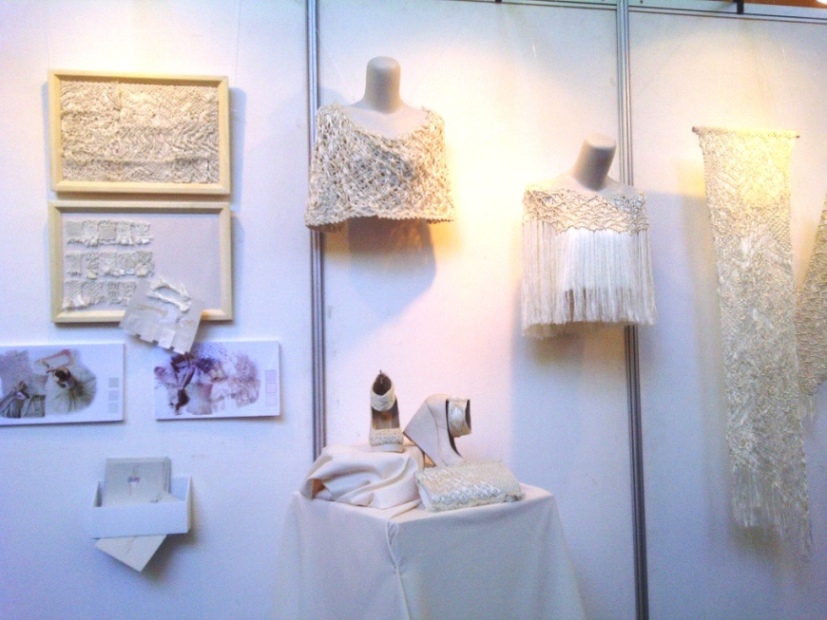 Various interesting products was displayed in this exhibition with extraordinary concepts, base materials, and techniques. Adinda Hady, for example, chose eco-fashion theme utilizing the leftovers of silk fiber with makrame technique. The combination of the leftovers processed with makrame technique was able to create elegant and beautiful clothes, shoes, and handbags.
Various interesting products was displayed in this exhibition with extraordinary concepts, base materials, and techniques. Adinda Hady, for example, chose eco-fashion theme utilizing the leftovers of silk fiber with makrame technique. The combination of the leftovers processed with makrame technique was able to create elegant and beautiful clothes, shoes, and handbags.
The currently controversial leather utilization was also able to fit in eco-fashion concept by Budi Ramadhan. Budi used natural fibers developed as synthetic feathers to be applied in fashion clothes. There were also presented clothes made of saeh wood fibers, utilizing the cortex of mulberry tree fused with organdi and taffeta to add a modern touch.
The creativity of ITB's Crafts students were also explored in the making of various furnitures. Petrianika Rumeksa was able to harness processed kapok fibers to be various bags, pencil cases, binder cases, and wall cushions. Besides kapok fibers, there were also students who utilized gadung for bag-making.
 Ceramic material bone china was also used by the students. These chinas was utilized to be lighting products with application of various patterns, such as floral pattern or embroidered textures on the surface. These lighting products was using the translucent properties of the china and combined with material exploration, production technique, to the light scattering experimentation. Before arriving in the final product, these chinas had to be burned in furnace up to 1230 degree Celcius.
Ceramic material bone china was also used by the students. These chinas was utilized to be lighting products with application of various patterns, such as floral pattern or embroidered textures on the surface. These lighting products was using the translucent properties of the china and combined with material exploration, production technique, to the light scattering experimentation. Before arriving in the final product, these chinas had to be burned in furnace up to 1230 degree Celcius.
"The products was very interesting and creative, especially the clothes. The idea and the design were also very original," said Anisa Wijayanti, one of the visitor.

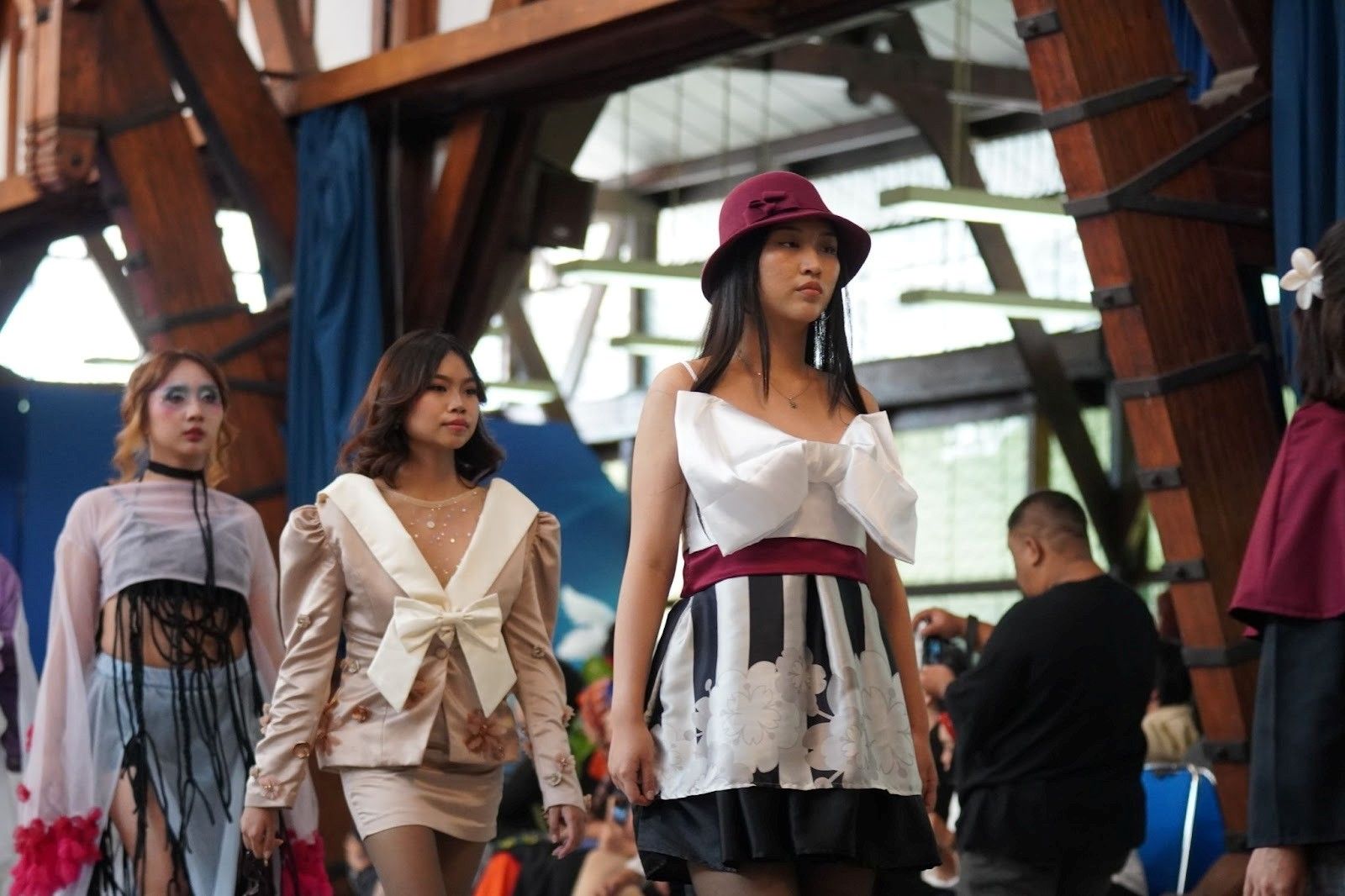
.jpeg)
.jpg)
.jpg)
.jpg)

